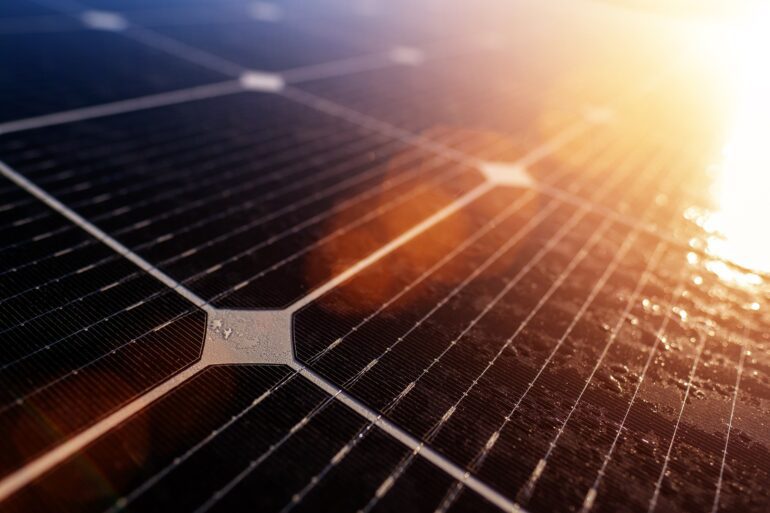TL;DR:
- AI and machine learning are transforming solar cell degradation prediction in the solar energy sector.
- Accurate prediction of degradation is crucial for maintenance, performance optimization, and return on investment.
- Traditional models often fail to account for real-world conditions, leading to inaccurate predictions.
- AI and machine learning leverage vast data and advanced algorithms to identify patterns and relationships.
- Predictive models help forecast degradation and enable informed decision-making.
- Continuous improvement through training enhances the accuracy and reliability of predictions.
- AI and machine learning optimize real-time performance, maximizing power output and minimizing degradation.
- Integration of AI and machine learning is still in the early stages but offers clear benefits for the market.
Main AI News:
The unprecedented advancements in artificial intelligence (AI) and machine learning have ushered in a new era of innovation across numerous industries, and the solar energy sector stands at the forefront of this transformation. Among the pressing challenges faced by the solar industry, accurately predicting solar cell degradation emerges as a pivotal factor that directly impacts the efficiency and lifespan of solar panels. Informed decision-making regarding maintenance, performance optimization, and return on investment for solar energy system owners, operators, and investors heavily relies on the accurate prediction of solar cell degradation. Fortunately, AI and machine learning have emerged as powerful allies in tackling this challenge head-on, offering groundbreaking and refined methods to predict solar cell degradation with unprecedented accuracy and reliability.
Solar cell degradation, an intrinsic process that unfolds gradually over time, is influenced by diverse factors such as temperature, humidity, ultraviolet (UV) radiation, and mechanical stress. As the performance of solar panels inevitably declines due to this degradation, the overall efficacy of a solar energy system is significantly compromised. Conventionally, the prediction of solar cell degradation has relied on empirical models based on historical data and laboratory tests. However, these models often overlook the intricate interplay among various factors that contribute to solar cell degradation in real-world conditions, leading to inaccurate predictions and suboptimal decision-making.
The advent of AI and machine learning is revolutionizing the landscape of solar cell degradation prediction by harnessing the power of immense data sets and sophisticated algorithms to unveil patterns and relationships that were previously unattainable. By delving into expansive data repositories encompassing crucial information on solar panel performance, environmental conditions, and other pertinent factors, machine learning algorithms can fabricate predictive models that are far more precise and dependable. These models, in turn, facilitate accurate forecasts of solar cell degradation across a range of diverse conditions, empowering solar energy system owners and operators to make well-informed decisions pertaining to maintenance and performance optimization.
A prominent advantage of employing AI and machine learning for solar cell degradation prediction lies in their ability to incessantly enhance the accuracy and reliability of predictive models through a process known as “training.” As ever more data is gathered and subjected to analysis, machine learning algorithms refine their predictions by identifying novel patterns and relationships, resulting in forecasts that are increasingly accurate and dependable. This ongoing improvement process assumes particular significance within the solar industry, where rapid technological advancements and evolving environmental conditions render traditional empirical models obsolete at an alarming pace.
In addition to bolstering the accuracy and reliability of solar cell degradation predictions, AI and machine learning possess the potential to optimize the real-time performance of solar energy systems. By diligently monitoring the performance of individual solar panels and detecting early signs of degradation, AI-powered systems can autonomously adjust the operation of solar panels, maximizing power output and minimizing degradation. This dynamic and real-time optimization holds tremendous promise in significantly enhancing the overall efficiency and lifespan of solar energy systems, thereby amplifying the returns on investment for solar energy system owners and operators.
While the integration of AI and machine learning into solar cell degradation prediction is still in its nascent stages, the potential benefits it presents are undeniably transformative. As more data is accumulated and machine learning algorithms continue to evolve, the accuracy and reliability of solar cell degradation predictions are poised to soar to unprecedented heights, fundamentally revolutionizing decision-making processes and ushering in more efficient solar energy systems. This technological revolution not only promises to elevate the performance and longevity of solar panels but also to expedite the widespread adoption of solar energy as a sustainable and cost-effective power source.
Conclusion:
The integration of AI and machine learning in solar cell degradation prediction represents a significant breakthrough for the market. It provides unprecedented accuracy and reliability, empowering stakeholders to make informed decisions regarding maintenance, performance optimization, and return on investment. This technological revolution not only enhances the efficiency and longevity of solar panels but also accelerates the adoption of solar energy as a sustainable and cost-effective power source. The market can expect improved decision-making processes, increased operational efficiency, and greater market acceptance of solar energy systems as a result of this transformative integration.

